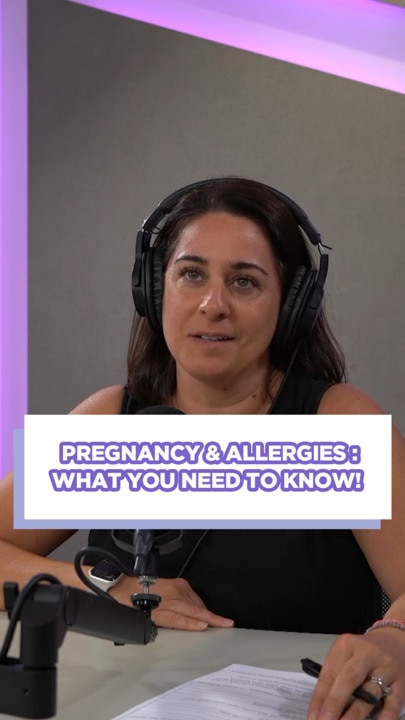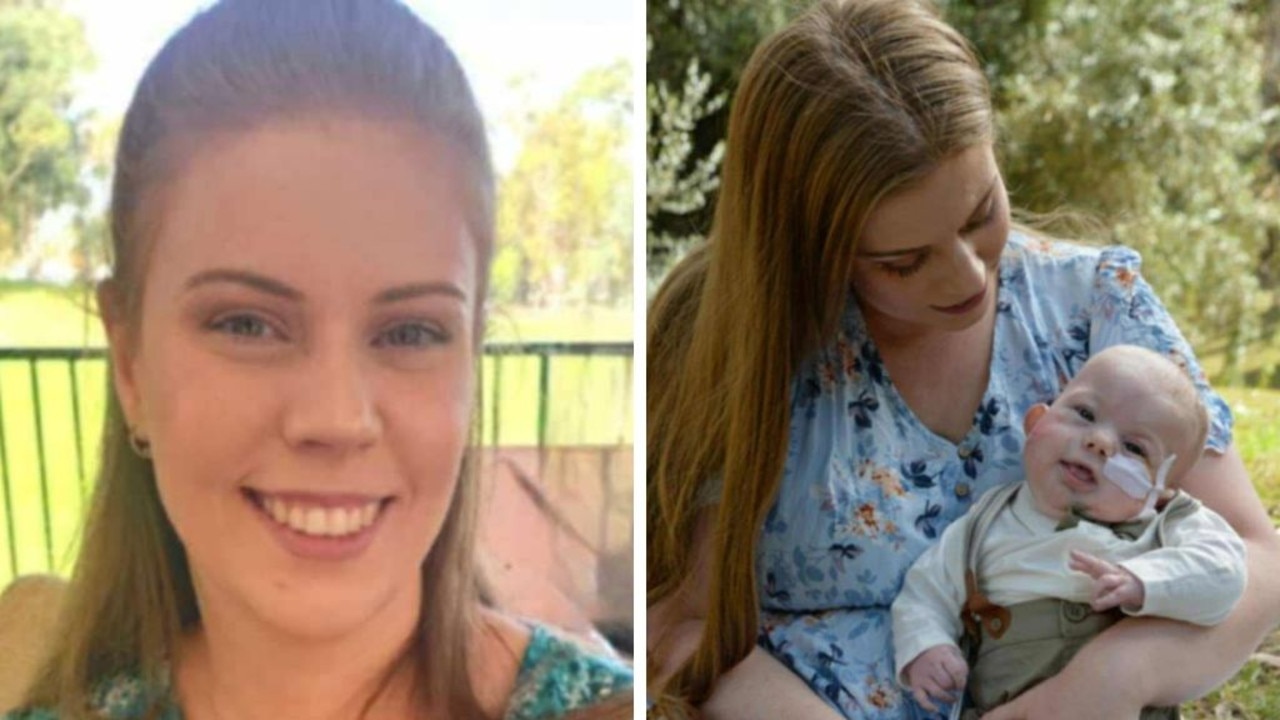‘Nearly died’: Rural mum’s multi-day labour horror
A NSW mum has opened up about her multi-day labour ordeal that ended with her fighting for her life in a hospital far from home.

When Jenny Roy moved from Canada to the small town of Narrabri in central New South Wales, she was following love.
“My husband is from there, and we met through a Rotary exchange in high school,” she told news.com.au. “I moved here, and then we started our life together”.
The high school sweethearts discovered they were pregnant only a few weeks after getting married and decided to see a doctor in another town, which is a significant drive away.
“I didn’t feel comfortable seeing a doctor in Narrabri, as there’s only one baby doctor and his books are full,” she continued. “You’re waiting around hours to see him”.

The pregnancy
In the other town, she was under the shared care model of an obstetrician (OB) and midwives and saw a doctor who came “highly recommended”.
“I booked in with him for most of my pregnancy but just wasn’t happy with his care,” she said.
“He would make me feel uncomfortable, almost a little creepy. I left every appointment crying, as he would scare me … it just wasn’t very positive.”
She was to give birth in a third town, Tamworth, due to her BMI, which can dictate where a woman is admitted to give birth.
“Many rural towns actually have a weight restriction, so if you weigh over 120kg, you’re not allowed to give birth because their equipment has a weight limit in theatres,” she noted.
“But if you look at the average country person, I can almost guarantee a lot of people are over 120kg.”

When she travelled to Tamworth Hospital – a two-hour drive – to attend her first appointment, it was pushed to the end of the day as the hospital was waiting on a visiting OB from interstate to fly in.
Eventually, the doctor arrived, and Jenny was shown to a room that wasn’t designed for her kind of appointment and that had old equipment.
She claimed the doctor struggled to initially find the ultrasound machine, and when she did, she reportedly said to Jenny, “This is so old, I’m not sure it will even work,” and then admitted she didn’t really know how to use it.
Having little faith in the service there, Jenny and her husband decided to switch her care to an OB in Moree, a one-hour drive from Narrabri.
“The OB in Moree told me that this was a high-risk pregnancy because of my gestational diabetes (GD), which is controlled by diet, not medication, automatically putting me in the high-risk category in a rural setting,” she explained, meaning she would give birth at John Hunter Hospital in Newcastle.
At 34 weeks, the couple travelled to Newcastle – a five-hour drive – for a pre-admission appointment.
There, the doctor informed them that they needed to remain in the seaside city from 35 weeks.
Fortunately, they had close family friends who allowed her to stay with them; otherwise, she pointed out, “it would have cost an arm and a leg”.
After returning home to Narrabri to pack a bag, the pair went back to Newcastle and prepared for the birth of their child.
The labour
Doctors prefer to deliver babies of mothers with gestational diabetes early, as these babies often tend to be larger.
So at 38 weeks, Jenny was induced.
“It was 6am on Thursday and they said I would have a baby by Friday morning, or by Friday lunchtime at the latest,” she said.
It started with a Sevidel, a medication used to prepare the cervix for labour, followed by a balloon catheter, after which it took doctors three separate attempts to break her waters.
They ended up having to push the baby down so her cord wouldn’t prolapse because she was still sitting too high.
Umbilical cord prolapse occurs when the umbilical cord comes out through the cervix ahead of the baby during labour, potentially compressing the cord and cutting off the baby’s oxygen supply.
If this happens, the baby must be delivered immediately to prevent death.
“I think this is where it really went wrong, because she ended up being stuck in my pelvis,” she said.
At 2am on Saturday, some 48 hours after the first intervention, the doctor visited and said that labour was not progressing quickly enough and she would require an emergency C-section.
She was told to get some sleep and that this would take place in the morning.
“The one thing I did not want during childbirth was a C-section. I was petrified,” she admitted.

The birth
Alice, her baby girl, was born at 9am on Saturday following a challenging delivery where she became stuck in the pelvis and needed forceps to be delivered.
She weighed five pounds nine ounces (2.5kg), instead of the predicted seven and a half pounds (3.4kg), which was the primary reason Jenny was told she would need to be induced.
24 hours later, Jenny was gravely ill with sepsis, which is an infection in the bloodstream. She believes this was likely caused by her waters being broken for an extended period prior to delivery or by the C-section procedure.
“I was so sick … it was absolute chaos. They were taking blood and had to remove my caesar bandage to swab the area for three nights in a row. On one of those nights, my husband was thrown out of the room with the baby because I was so unwell,” she recalled.
Her temperature reached 42.6 for six hours, and the nurses told her they were surprised she wasn’t seizing.
“I nearly died,” she said, her voice trembling. “My husband recently told me he was scared sh**less and thought he was going to lose his wife”.

Post-partum
Jenny was given a central line to her heart to administer lifesaving antibiotics, and when she stabilised, the doctor said she would likely be moved back to Narrabri to recover.
In the end, that decision was changed, and she spent ten days recovering in Newcastle.
When she returned home, she was visited by the community nurse when Alice was eight weeks old.
She was told they would return for a second visit, and despite Jenny’s many attempts to schedule an appointment, her calls went unanswered, and she never received that visit.
“I never heard from them. It might not be because they don’t care, but they’re just very busy,” Jenny said.
“But here’s the thing – country women are already so isolated, so it’s hard to feel like the healthcare professionals aren’t there for you. There are online therapists, but I don’t want to talk to a computer.
“I feel like I developed postnatal depression and looking back, I’m lucky I made it out alive.”

Spokesperson for Hunter New England Local Health District responds
A spokesperson for Hunter New England Local Health District said, “While we’re unable to comment on specific cases due to privacy, we acknowledge the distress these women have experienced.
“As is always the case when things don’t go according to plan, or fall below expectation, we have spoken with each of them to discuss their experiences of care. We are sorry their experiences fell below expectations.
The spokesperson continued: “Maternity services in NSW are networked, ensuring women and their babies receive the safest care at the most appropriate facility. From the outset, women, their support person/people, and our dedicated maternity staff work together to plan for the birth and ongoing care.
“The woman’s birth plan is constantly reviewed and updated with the woman, throughout her pregnancy, ensuring that recommendations and decisions are always made in the best interest of both the woman and her baby. However, sometimes these plans change – whether due to the need for specialist care, unexpected workforce shortages, or other unforeseen circumstances. When this happens, we acknowledge how disruptive it can be, especially if the location of the birth needs to change, and we sincerely apologise to any women who have experienced this.”
Bush Babies campaign
In response to stories like Jenny’s, a campaign called Bush Babies has emerged.
The campaign specifically calls for a parliamentary inquiry into declining rural and remote maternity services throughout NSW, as well as a new bundled funding model designed around regional needs rather than centralised urban hospitals alone.
Reflections
Jenny and her husband have now decided not to expand their family beyond their first child.
She feels let down and has lost trust in the rural medical system, which she claims, upon reflection, attempted to rush her into labour when her body and baby were not ready, in order to free up beds.
“We need more doctors in rural towns,” she urges. “And more equipment. Why can’t I have a baby here? Why are we being put through these situations just because my husband works out here in a specialised job that you can’t do in the city?”
When asked about her message to other expectant mothers in regional areas, Jenny says, “You can say no, and your body is your choice.
“I know the doctor had my best interests at heart, but the system as a whole let me down.”






